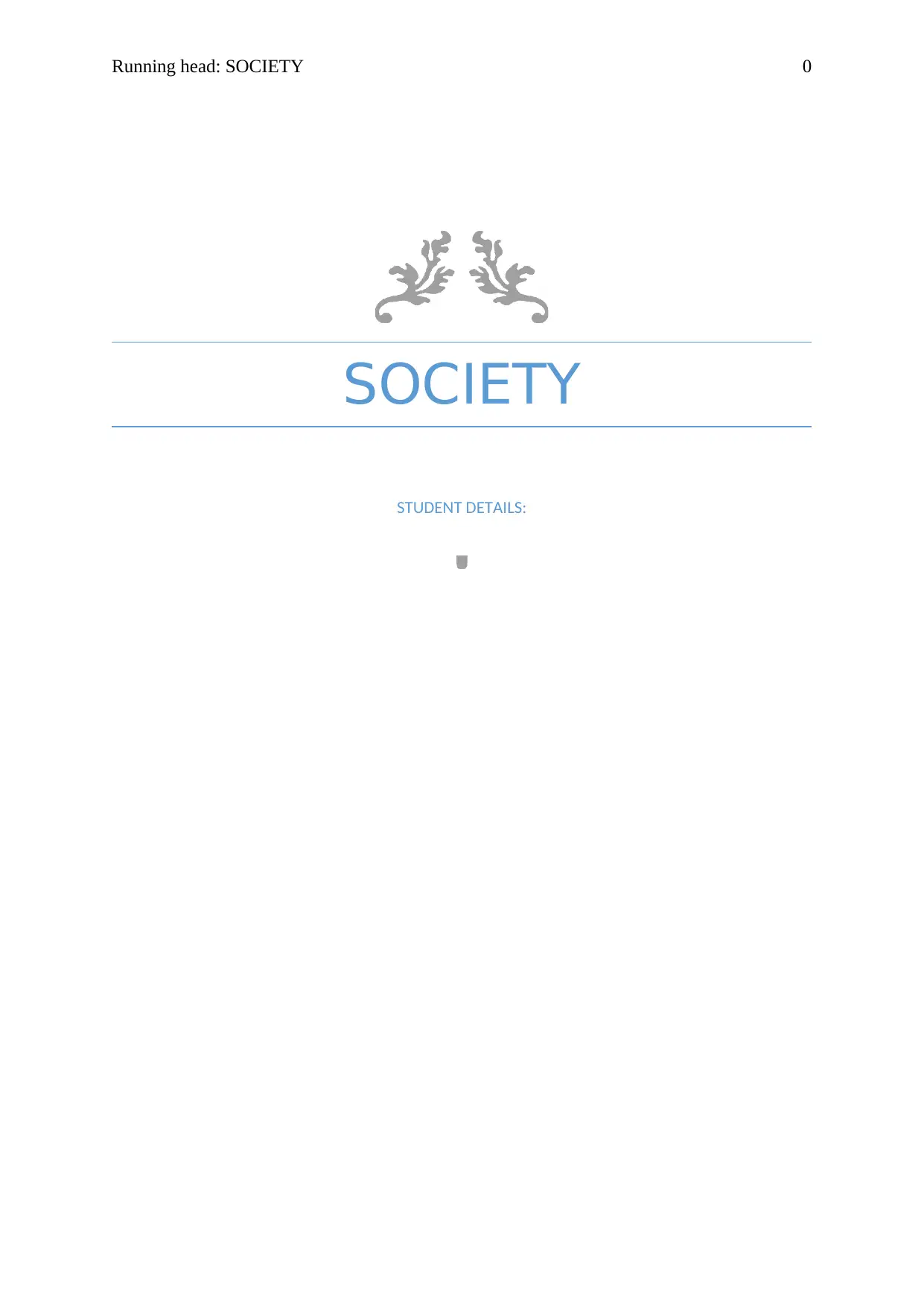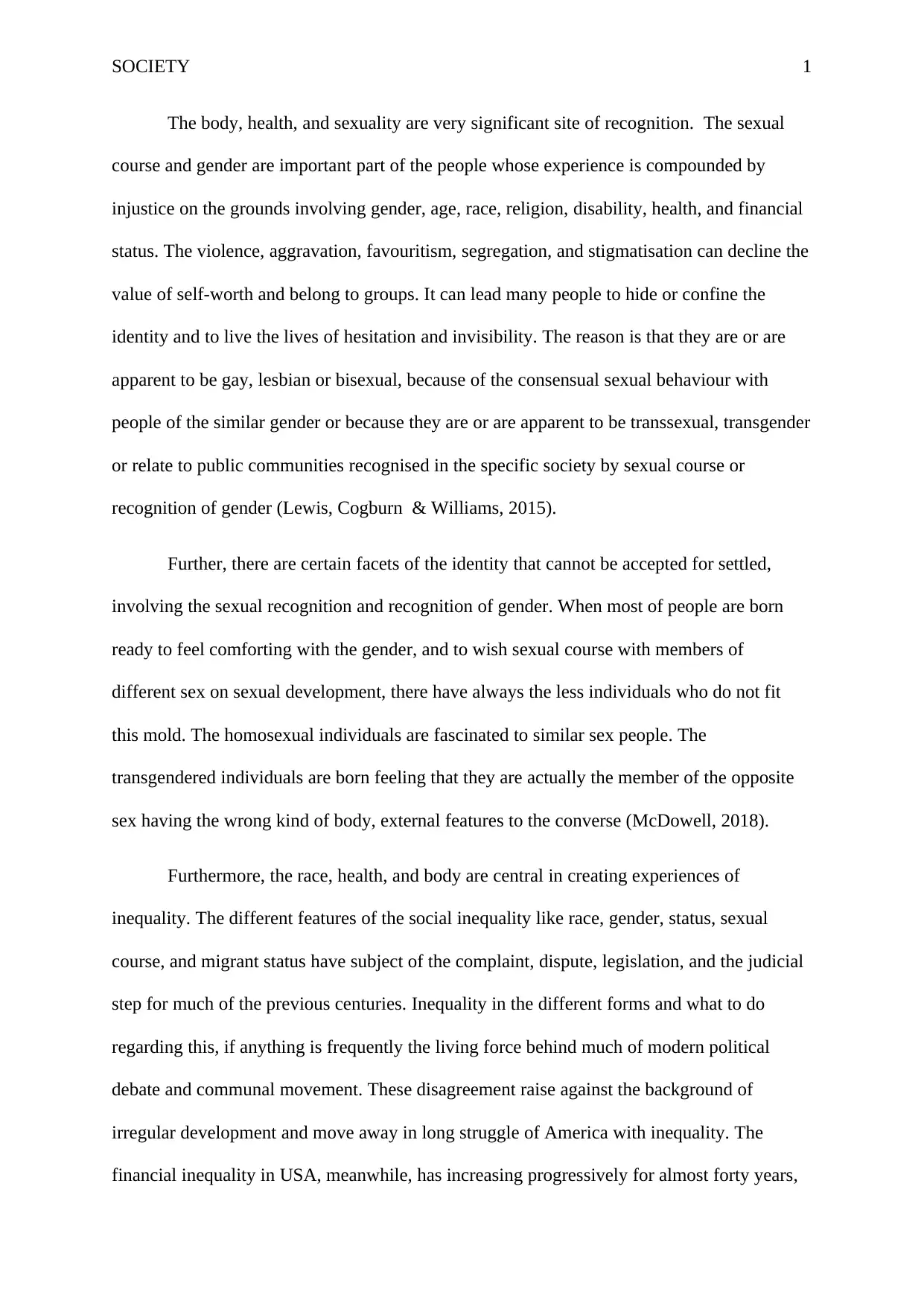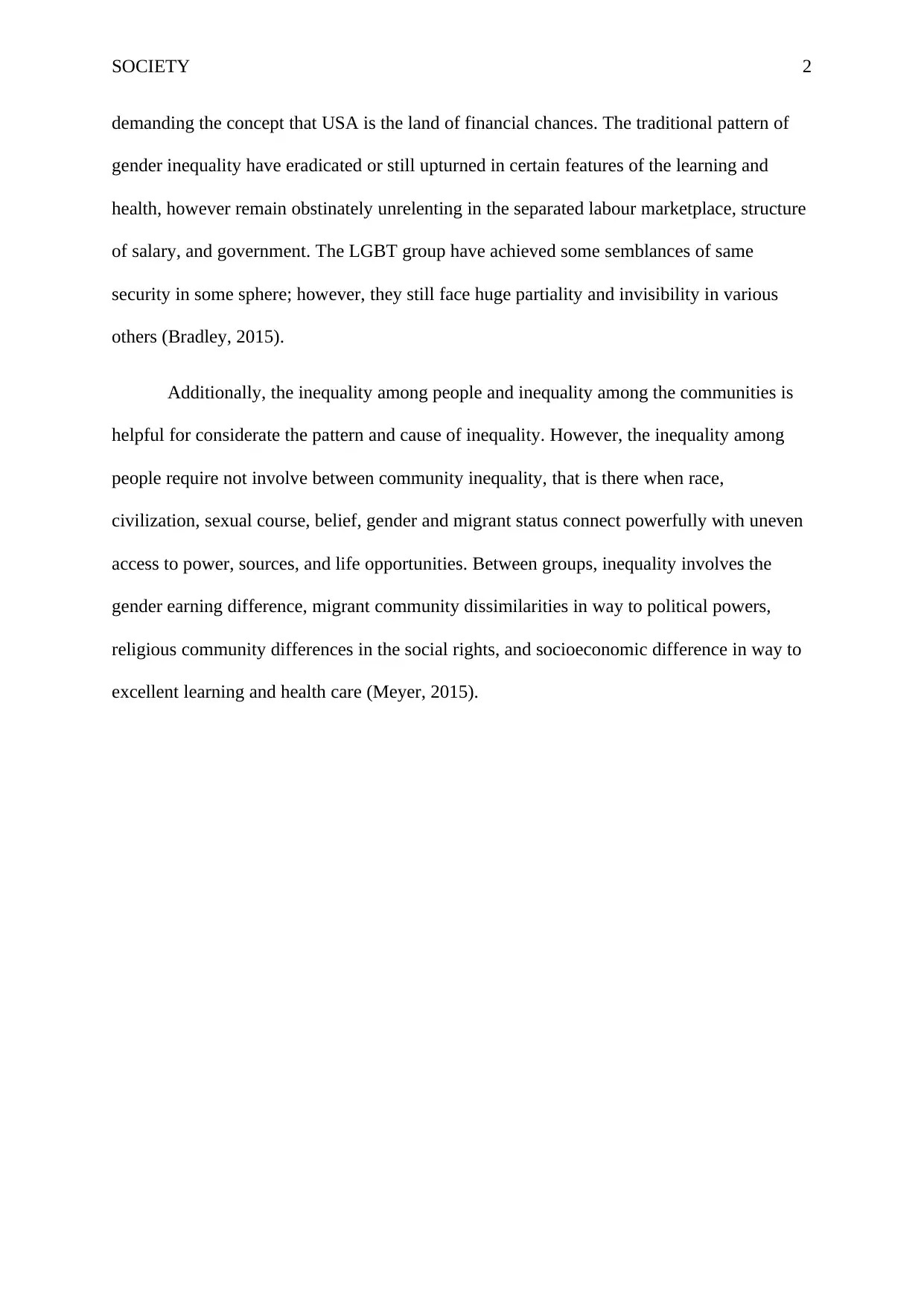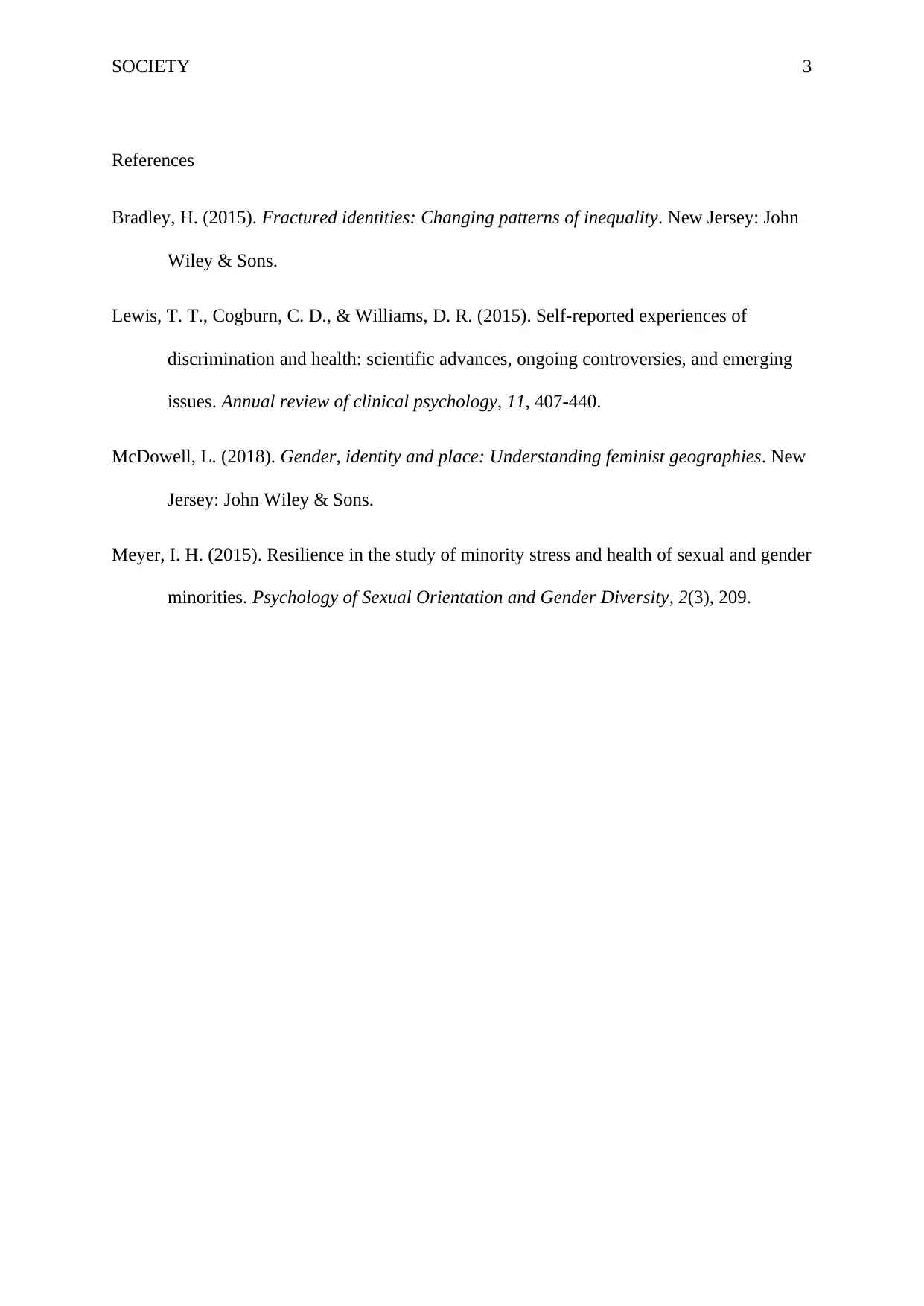SOCIETY: Analyzing the Intersections of Identity and Inequality
VerifiedAdded on 2022/01/05
|4
|738
|32
Essay
AI Summary
This essay delves into the multifaceted concept of social inequality, examining how factors such as gender, race, health, sexuality, and financial status intersect to create disparities within society. The essay highlights how these aspects of identity can lead to discrimination, stigmatization, and marginalization, particularly for groups like the LGBTQ+ community. It explores the historical and contemporary manifestations of inequality, including gender and financial disparities, and emphasizes the significance of understanding both individual and group-level inequalities. The essay references academic sources to support its arguments, providing a comprehensive analysis of the complex dynamics of social inequality and its impact on individuals and communities.
1 out of 4










![[object Object]](/_next/static/media/star-bottom.7253800d.svg)